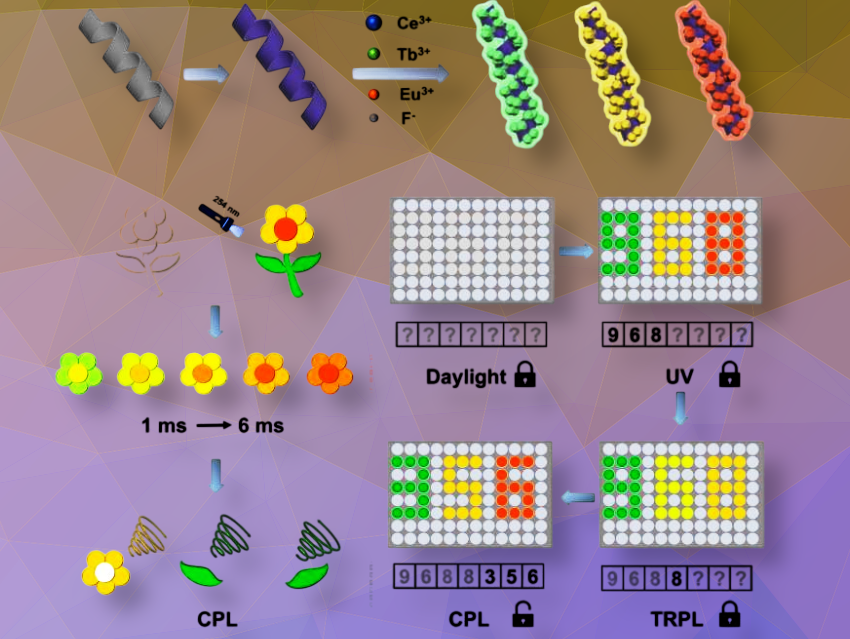Despite extensive research into Circularly Polarized Luminescence (CPL) materials, creating stable CPL systems with multiple, tunable optical outputs for advanced anti-counterfeiting remains a significant challenge.
Shan Lu and colleagues, Fujian Institute of Research on the Structure of Matter, Chinese Academy of Sciences, have developed a strategy: chiroptical inorganic nanocomposites formed via in situ assembly of rare-earth (RE) fluoride nanoparticles with left- or right-handed helical silica (L/R-HS). This chirality induces CPL—emission of light with a specific circular polarization—and the team systematically explored how the assembly ratio and particle morphology affect the luminescence dissymmetry factor (glum), achieving an optimized value of 4.7 × 10⁻³. The glum value quantifies the difference in intensity between left- and right-handed circularly polarized emission; higher values indicate stronger chiroptical activity.
The nanocomposites maintain their CPL even after calcination at 400 °C, highlighting their thermal stability. By adjusting the types and concentrations of RE dopants—specifically Ce³⁺, Tb³⁺, and Eu³⁺—the team achieved tunable multicolor CPL and time-resolved photoluminescence. These properties, along with hidden dynamic and chiroptical signals, were used to generate intricate, high-security anti-counterfeiting patterns and multilayered optical encryption codes.
This work not only introduces a robust pathway for fabricating thermally stable CPL-active nanomaterials but also opens new avenues for advanced optical security technologies based on multicolor and chiral luminescence.
- Helically Assembled Rare Earth Fluoride Nanoparticles with Multicolor Circularly Polarized Luminescence for High-Security Anti-Counterfeiting,
Wen Yuan, Shan Lu, Xingjun Li, Zhuo Li, Xiaobo Gu, Xingyang Liu, Zhixiao Ren, Fei Wang, Xueyuan Chen,
Aggregate 2025, e70042.
https://doi.org/10.1002/agt2.70042





